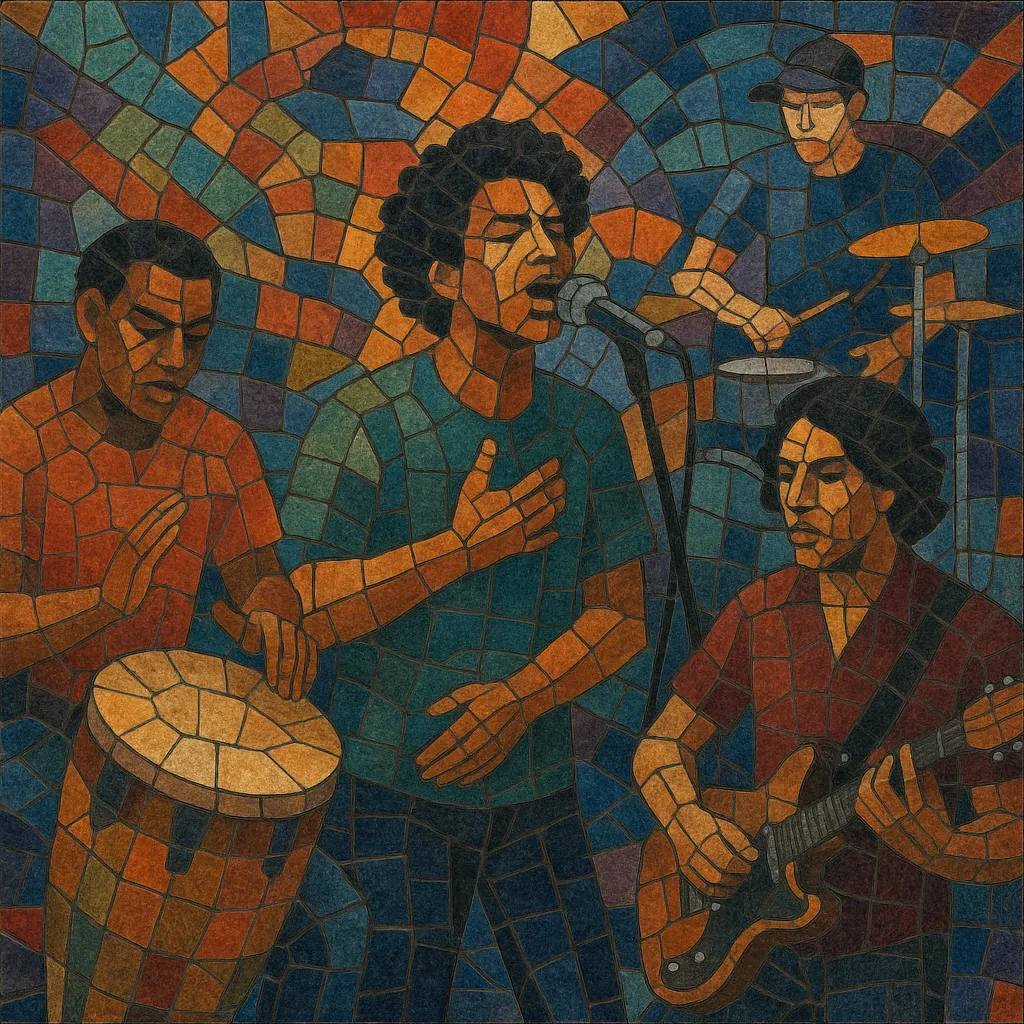Maloya élektrik is the electrified, band-driven evolution of maloya from Réunion (France), where ancestral percussion and call-and-response vocals meet electric guitar, bass, drum kit, and keyboards.
It keeps the genre’s hypnotic 6/8 swing, polyrhythms, and Creole storytelling, but channels the energy and timbres of rock, reggae, and dub to create a dance-floor-ready, amplified sound.
Lyrically, it often carries maloya’s social conscience—identity, history, love, and everyday life—while arrangements add riff-based guitars, dubwise bass lines, and modern production for festivals and large venues.
Traditional maloya—rooted in the Afro-Malagasy-Indian heritage of Réunion—was long marginalized and partially repressed. As the island’s cultural renaissance gathered momentum in the late 1970s, bands began plugging in. Groups like Ziskakan (formed in 1979) and artists such as Ti Fock pioneered amplified setups, welding kayamb and roulèr grooves to electric guitars and drum kits. This marked the birth of maloya élektrik: the same trance-like 6/8 feel, now scaled for stages and sound systems.
In the 1990s, acts like Baster and Ousanousava popularized a maloya-rock/reggae blend, while studio techniques borrowed from dub and global pop made the sound punchier. The scene professionalized with festivals (e.g., Sakifo) and growing international tours. In 2009, UNESCO recognized maloya as Intangible Cultural Heritage, further boosting local pride and global visibility—even for its electric variants.
A new generation (Grèn Sémé, Davy Sicard, Lindigo, Christine Salem, Maya Kamaty, Saodaj’) expanded the palette with indie, jazz, and dub influences. Parallel strands emerged—maloya élektrik (band-oriented, guitar-driven) and maloya électronique (electronics-forward)—often cross-pollinating. Today, maloya élektrik thrives as a vibrant, outward-looking form that keeps community rhythms at its core while embracing contemporary production and global stages.


